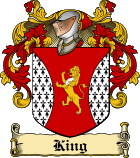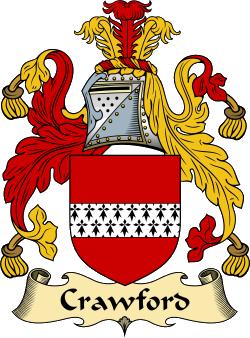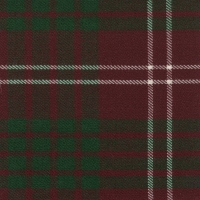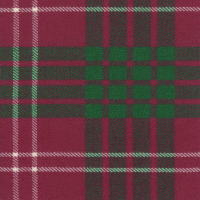|
|
Search

|
  Home Home
|
  Surname Surname
|
  First Name First Name
|
Popular Products

|
  Coat of Arms Coat of Arms
|
  Clan Badges Clan Badges
|
  Books & Gifts Books & Gifts
|
  Celtic Jewelry Celtic Jewelry
|
  Black Shirts Black Shirts
|
  CD Music CD Music
|
  Download Download
|
 Design Gallery
Design Gallery

|
  Irish Irish
|
  Flags Flags
|
  Celtic Celtic
|
  Tartans Tartans
|
  Scottish Scottish
|
  Claddagh Claddagh
|
  Surnames Surnames
|
  Highlander Highlander
|
  Celtic Radio Celtic Radio
|
Research

|
  History History
|
  Country Country
|
  Families Families
|
|
|
|
|
 Our catalog of products also includes three designer logos created specially by the Celtic Radio designers:
'Enjoy Life' Brand - Pigmented fun t-shirts with our 'Enjoy Life' logo. Stickers available too!
'StormCelt' Brand - Rugged wilderness outdoor wear for the true independent Celt.
'StormGale' Brand - Clothing products to keep you warm & dry when storm winds blow.
|
|
Our Heraldry Database has thousands of Family histories to search. Visit Now!
King

Coat of Arms
Some of the most famous Irishmen named King have been of Anglo-Irish stock, notably Archbishop William King (1650-1729), a vigorous Protestant: he was an ornament to the nation by reason of his encouragement of the Irish language in Dublin University, his collection of manuscripts, and his support of Swift, e.g. in his campaign against "Wood's halfpence". Another Protestant, Rev. Robert King (1815.....
|
|
|
Heraldry Database: Crawford
Crawford

|
|


Surname: Crawford
Branch: Crawford
Origins: Scottish
More Info: Scotland
|
|
Background: The ancestors of the Crawfords (or Crawfurds) can be traced back to the old barony of Crawford in Lanarkshire, in the 12th century.
Sir Reginald of Crawford was Sheriff of Ayr in the reign of King William the Lion. Sir Crawford, who died in 1248, had a daughter who married a Lindsay ancestor of the earls of Crawford. Another daughter, Margaret, married Sir Malcolm Wallace of Ellerslie and became the mother of the great resistance leader Sir William Wallace.
|
 Motto: Motto: Tutum Te Robore Reddam, Our Strength in Exchange for Your Trust. Arms: Quarterly, 1st & 4th, Gules, as fess ermine, 2nd & 3rd, Argent a stag's head erased Gules. Crest: A stag's head erased Gules, between the attires a cross crosslet fitchee Sable. Supporters: Two bulls Sable, unarmed and unguled Or. Plant: Boxwood. View the Heraldry Dictionary for help.

The family of crawford is believed to be of norman origina, taking their name from the barony of the same name in Lanarkshire. The early names of the principle families are all Norman, although some scholars have asserted an Anglo-Danish ancestry. According to tradition, Reginald, son of the powerful Earl of Richmond, was one of the Norman Knights established by David I. The Crawfords feature in the legendary incident which led to the foundation of the Abbey of Holyrood when the king's life was saved from a stag in 1127: Sir Gregan Crawford, together with divine intervention, was instrumental in saving his royal master's life. In 1296, Sir Reginald Crawford was appointed sheriff of Ayr. His sister, Margaret, married Wallace of Elderslie, and was the mother of Sir William Wallace, the great Scottish patriot. The Crawfords rallied to their cousin in his struggle against English domination. The family of the sheriff of Ayr also produced the main branches of this family, who were styled 'of Auchinames' and 'of Craufurdlan'. The chiefly family is generally reckoned to be that of Auchinames in Renfrewshire, who received a grant of their lands from Robert the Bruce in 1320. Sir William Crawford of Craufurdland was one of the bravest men of his time and was knighted by James I. He fought with the Scots forces in the service of King Charles VII of France and was wounded at the seige of Creyult in Burgundy in 1423. John of Craufurdland followed James IV to the sorry field of Flodden where, in company with much of the flower of Scottish Chivalry, he died. The Lairds of Auchinames, too, fell at Flodden and, a generation later, at Pinkie in 1547. Sir Thomas Craufurd of Jordanhill also fought at the Battle of Pinkie but was luckier than his cousin, being captured and later ransomed. He became a member of Lord Darnley's household when he married Mary, Queen of Scots. In 1569 he denounced Maitland of Lethington and Sir James Balfour as being the true conspirators in the murder of Lord Darnley. He did not, however, sympathise with the plight of the deposed queen, and in 1570 captured Dumbarton Castle from her forces with just one hundred and fifty men.
The splendid Castle of Craufurdland was much extended by the sixteenth Laird in the seventeenth century. John Walkinshaw Craufurd, the twentieth Laird, was a distinguished soldier who, after entering the army at an early age, rose to the rank of lieutenant colonel and was present at the victory of Dettingen in 1743, also distinguishing himself at Fontenoy two years later. Despite his faithful service to the house of Hanover, he was an intimate and faithful friend of the Jacobite Earl of Kilmarnock, and he accompanied his ill-fated friend to the scaffold as a last act of comradeship. He received the earl' severed head and attended to the solemnites of his funeral. This act of charity resulted in his name's being placed at the bottom of the army list. However, he restored his fortunes and in 1761 he was appointed falconer to the king. Despite his devotion to his friends, he did not seem to share a similar affinity for his family. He died in 1793 and in his will left his entire estates to Sir Thomas Coutts, the eminent banker. The deed was, however, contested by Elizabeth Craufurd, who eventually won her case in the House of Lords in 1806, and the ancient estates passed back to the rightful heir. This branch of family thereafter united the houses of Houison and Craufurd, and they still live at Craufurdland. Sir Alexander Craufurd of Kilbirnie was created a baronet in June 1781. His son, Robert, commanded the Light Division in the Peninsular War (1808-14) and died in 1812, leading his troops on an assult on the fortress of Ciudad Rodrigo. A grateful nation erected a monument to his in St. Paul's Cathedral in London. Hugh Crawfurd, twenty-first Laird of Auchinames, emigrated this century to Canada, having sold the ancient family lands.
Name Variations: Craunford, Crafort, Craweford, Crafoord, Crawford, Crawfurd, Crawffurd, Crawfaird, Crafford, Crafoard, Craford, Crafuirde, Craufurde, Crafurd, Crouford, Crauffurd, Craufurd, Crawfeurd, Craufoord, Crauford, Crauforth, Krauford.
References:One or more of the following publications has been referenced for this article.The General Armory; Sir Bernard Burke - 1842.
A Handbook of Mottoes; C.N. Elvin - 1860.
Scottish Clans and Tartans; Neil Grant - 2000.
Scottish Clan and Family Encyclopedia; George Way of Plean and Romilly Squire - 1994.
Scottish Clans and Tartans; Ian Grimble - 1973.
World Tartans; Iain Zaczek - 2001.
Clans and Families of Scotland; Alexander Fulton - 1991.

|

Modern | 
Ancient |




Sign-up for a Founders account and receive personalized
family heraldry service and much more!

Want to know more?
Click the Heart!
|
|
|



